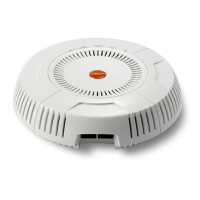Wireless Access Point
Glossary of Terms 615
SDMA
(Spatial Division Multiple Access) A wireless communications mode that
optimizes the use of the radio spectrum and minimizes cost by taking advantage
of the directional properties of antennas. The antennas are highly directional,
allowing duplicate frequencies to be used for multiple zones.
SNMP
(Simple Network Management Protocol) A standard protocol that regulates
network management over the Internet.
SNTP
(Simple Network Time Protocol) A simplified version of NTP. SNTP can be used
when the ultimate performance of the full NTP implementation described in RFC
1305 is not needed or justified.
SSH
(Secure SHell) Developed by SSH Communications Security, Secure Shell is a
program to log into another computer over a network, to execute commands in a
remote machine, and to move files from one machine to another. The AP only
allows SSH-2 connections. SSH-2 provides strong authentication and secure
communications over insecure channels. SSH-2 protects a network from attacks,
such as IP spoofing, IP source routing, and DNS spoofing. Attackers who has
managed to take over a network can only force SSH to disconnect — they cannot
“play back” the traffic or hijack the connection when encryption is enabled. When
using SSH-2's slogin (instead of rlogin) the entire login session, including
transmission of password, is encrypted making it almost impossible for an
outsider to collect passwords. Be aware that your SSH utility must be set up to use
SSH-2.
SSID
(Service Set IDentifier) Every wireless network or network subset (such as a BSS)
has a unique identifier called an SSID. Every device connected to that part of the
network uses the same SSID to identify itself as part of the family — when it wants
to gain access to the network or verify the origin of a data packet it is sending over
the network. In short, it is the unique name shared among all devices in a WLAN.

